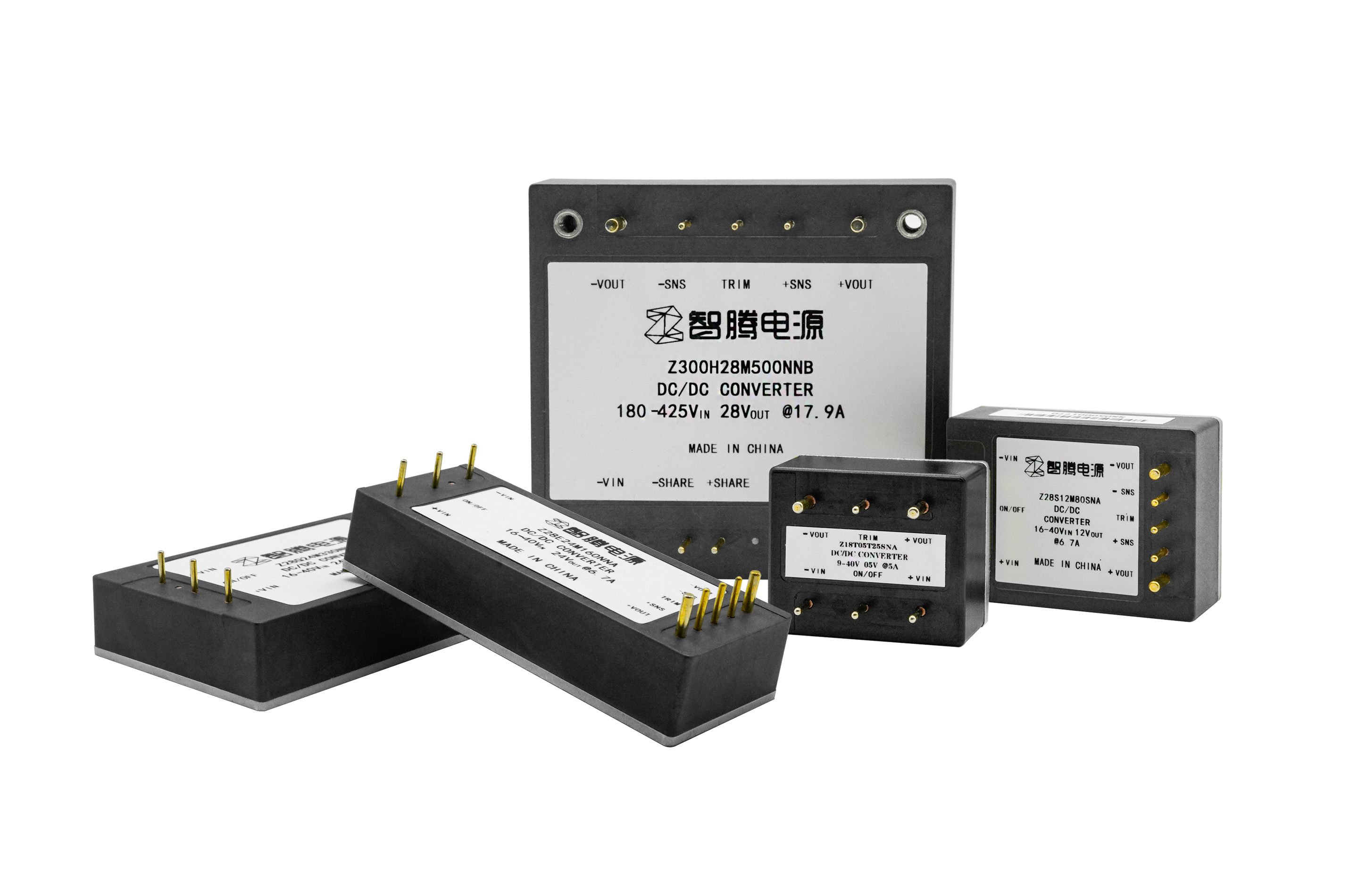A DC-DC power module is a device that converts one DC voltage to another. Due to its high efficiency, small size, high reliability, and ease of use, it is ubiquitous in modern electronic systems. Below, I will detail its application cases and scenarios for you.
I. Core Advantages of DC-DC Power Modules
High Efficiency: The efficiency of switching DC-DC converters is generally above 85%, far exceeding that of Linear Regulators (LDOs), reducing energy loss and heat generation.
Wide Input Voltage Range: Can adapt to significantly fluctuating input voltages, such as from an automotive battery (9V-36V) or the industrial standard 24V.
Electrical Isolation: Many modules provide electrical isolation between input and output, enhancing system noise immunity and safety.
Simplified Design: Encapsulates complex power circuitry and EMC design within the module, allowing engineers to avoid designing from scratch and accelerating time to market.
Small Size, High Power Density: Aligns with the trend of miniaturization and portability in electronic products.
II. Main Application Scenarios and Typical Cases
The application of DC-DC power modules can be divided by their function (step-up/boost, step-down/buck, isolation) and by industry.
Scenario 1: Communication and Network Equipment
Communication equipment places extremely high demands on power supply noise, dynamic response, and power density.
Base Station Equipment: In 5G/4G base stations, the -48V voltage from the power cabinet needs to be converted to the various voltages required by board chips (e.g., 12V, 5V, 3.3V, 1.0V). This uses isolated step-down modules and non-isolated point-of-load (POL) modules, forming a distributed power architecture.
Routers/Switches: The device input might be 12V or 48V, but the core processors (CPU, FPGA, ASIC) require very low voltages (e.g., 0.8V, 1.2V) and high currents (tens of Amperes). Non-isolated step-down modules are used here, converting voltage directly at the load point to reduce transmission losses and improve dynamic response speed.
Optical Modules: In fiber optic communication, miniaturized optical modules need to boost the 3.3V voltage provided by the equipment to the 5V or higher voltage required by the laser. Small-form-factor boost/buck modules are commonly used.
Core Requirements: High power density, low noise (low ripple), fast transient response, high efficiency.
Scenario 2: New Energy and Power Systems
Involves high voltage and high power scenarios.
Photovoltaic Inverters: The control board inside the inverter needs to draw power from the high DC voltage of the solar panels (e.g., 200V-1000V) and convert it to low voltage. This requires high-input-voltage isolated DC-DC modules.
Energy Storage Systems (ESS): Similar to PV inverters, they require safe, isolated voltage conversion from the high voltage of the battery pack.
Smart Meters: Draw power from the grid (220V AC), obtain a high DC voltage via a transformer and rectifier circuit, and then use a high-isolation-voltage DC-DC module to convert it to safe, low-voltage power for the MCU and metering chip.
Core Requirements: High isolation voltage (e.g., 3000VDC or above), high reliability, long lifespan.
III. How to Select the Right DC-DC Power Module?
When selecting, you can follow this checklist:
Input/Output Voltage: Confirm your input voltage range and required output voltage(s).
Output Current/Power: Calculate the maximum current required by the load, leaving a certain margin (e.g., 20%-30%).
Isolation Requirement: Is isolation needed? What level of isolation voltage is required? (Industrial, communication, and automotive applications typically need it).
Package & Size: Does the module's physical size and pinout fit your PCB layout?
Efficiency: Higher efficiency at typical load is better, especially for battery-powered devices.
Operating Temperature Range: Does it suit your application environment? (Commercial: 0°C to +70°C, Industrial: -40°C to +85°C).
EMC & Certifications: Has the module passed necessary industry certifications? (e.g., CE, UL, CQC; AEC-Q100 for automotive).
Cost: Select the most cost-effective solution that meets all the above technical criteria.
ZITN innovative products are designed to exceed the demanding performance, quality, and reliability requirements of today's power electronic engineers and system integrators who develop leading-edge infrastructure hardware. We offer full brick Isolated DCDC power module include 1/2brick, 1/4 brick, 1/8brick, 1/16brick, and 1/32 brick. These converters are widely used for aerospace, electrical, biomedical,energy, and other indusries.
Feel free to contact at: angela.zhang@qdzitn.com


